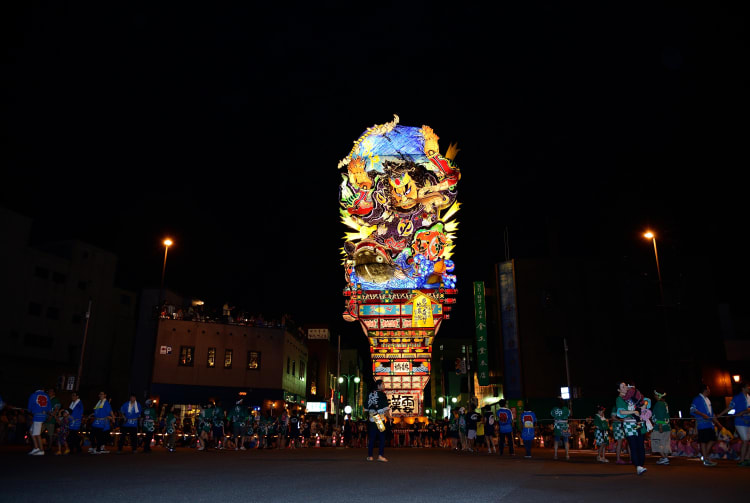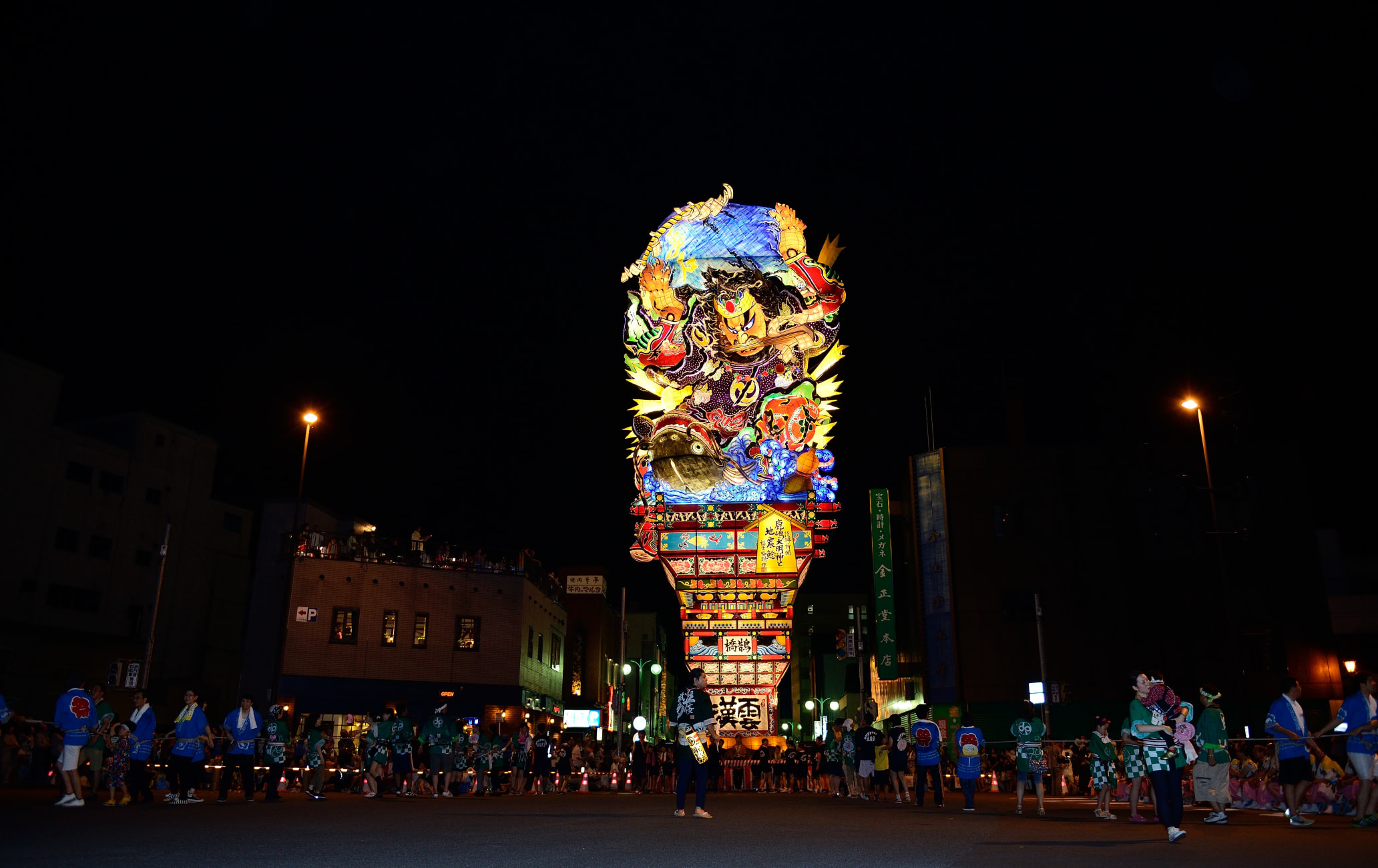A classic Japanese summer festival featuring a parade of sky-high floats
This festival takes place in August every year and features huge, colorful neputa floats. Like the Aomori Nebuta and Hirosaki Neputa festivals, the Goshogawara Tachineputa Festival features a parade of neputa, but with a vital difference: Goshogawara Tachineputa Festival's "standing" neputa are 23 meters (75 feet) tall, about the same size as a seven-story building.
Don't Miss
- The parade of colossal 23-meter floats
- Tachineputa Hall, where you can help build the floats
- The outstanding views from the sixth-floor lounge of Tachineputa Hall
How to Get There
Goshogawara City is best accessed by train or car from either Aomori City or Hirosaki City .
Goshogawara is on the northwestern side of Aomori Prefecture. It is inland and closer to Hirosaki than Aomori, but accessible from either.
From Aomori Station, take the JR Ou Line train to Kawabe Station, and change to the JR Gono Line to Goshogawara Station. It takes about 75 minutes. From Hirosaki Station, the Ou Line will take you to Goshogawara Station via Kawabe in around 50 minutes. By car, it is roughly 50 minutes from either Aomori or Hirosaki.
Three-dimensional monsters looming above
The huge tachineputa of Goshogawara City's festival are impressive—at 23 meters tall—even if you have already been to the Aomori Nebuta Festival or Hirosaki Neputa Festival. The Tachineputa are giant, with intricate, 3D designs of samurai, beasts, and mythical characters.

The word "tachineputa" is made up of two parts. The first, "tachi", means "standing," while "neputa" refers to the style of float. The floats do "stand", but it is how they are moved that is most impressive.
Each float weighs around 19 tons and are moved manually by pulling them with ropes and changing direction by pivoting the float carriages carefully through Goshogawara's narrow streets.

Lively music and dancing
Because Goshogawara is much smaller than the cities of Aomori and Hirosaki , the music and taiko drums that accompany the parade seem to be louder and more lively. The calls of "yatte-mare, yatte-mare!" between the participants add to the raucous atmosphere.
The calls mean, roughly, "Go get 'em," and originated at a time when the floats competed against each other, and fights would break out between the people pulling each float.
Small-town benefits
This is one of the more accessible festivals. There are huge crowds, but pretty much everyone can find a seat. Once the party starts at 7 p.m., people stand, dance and join in on the revelry. Despite this, the relatively small scale of the festival means you won't have to compete for a spot to see the parade.
A long and colorful history
Goshogawara's Neputa Festival dates back over 100 years. At that time, wealthy landowners competed to build the tallest neputa. However, in the 1920s overhead power lines were installed, limiting the height of the floats, and a series of fires destroyed the original float blueprints.
The blueprints were thought to have been lost forever, but in 1993 one was found at the base of a neputa, leading to their revival in Goshogawara. In 1996, for the first time in nearly 100 years, the huge neputa were restored, and renamed "Tachineputa." In 1998 the city's electric wires were buried underground, and the festival was revived as the "Goshogawara Tachineputa Festival."
Things to do around the festival
While you're there, it's worth a visit to the Tachineputa Hall. The hall is a five-minute walk from Goshogawara Station. If you're in town a few months before the festival, you can even participate in the making of the floats.
The lounge on the sixth floor of the hall has panoramic views of the area. On a clear day, you can see both Mt. Iwaki and the Hakkoda Mountains.
Fans of the writer Osamu Dazai can visit the Dazai Museum, located in the house residence in which he was born. Take the Tsugaru Tetsudo Line from Tsugaru Goshogawara Station for around 30 minutes and alight at Kanagi Station. The museum is a five-minute walk from Kanagi Station. By car, it is a 20-minute drive from JR Goshogawara Station.



























































